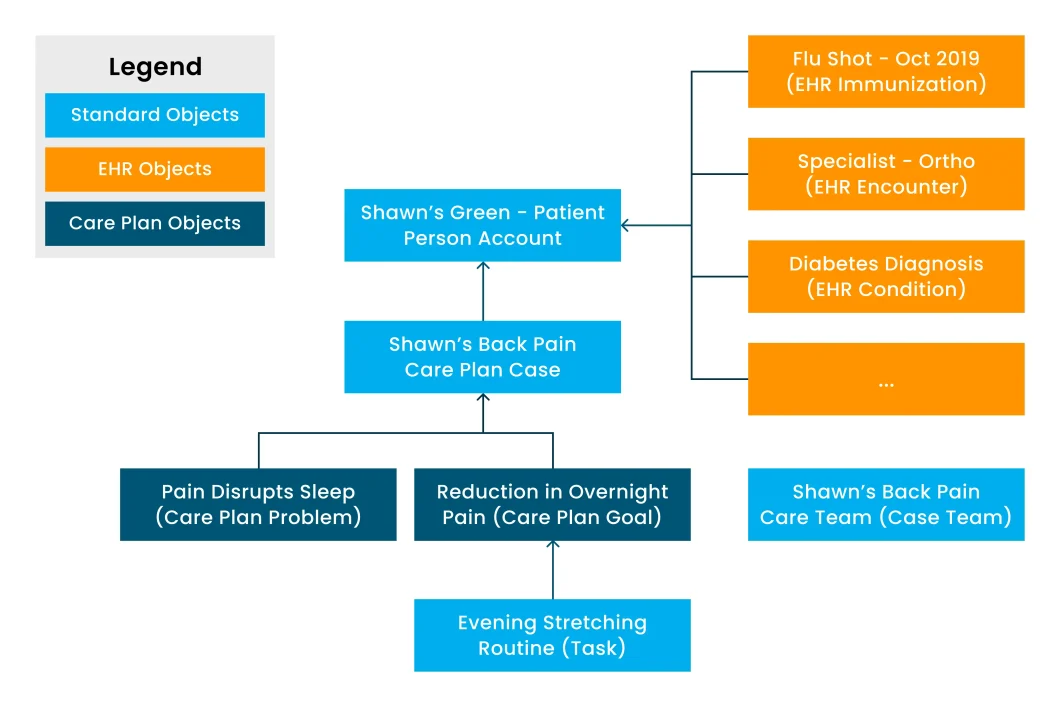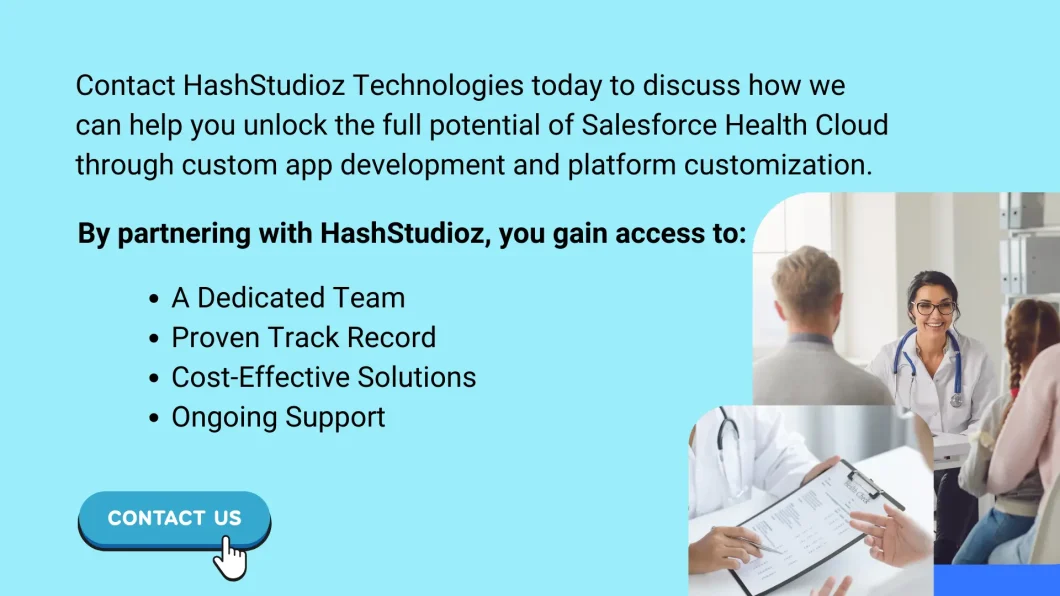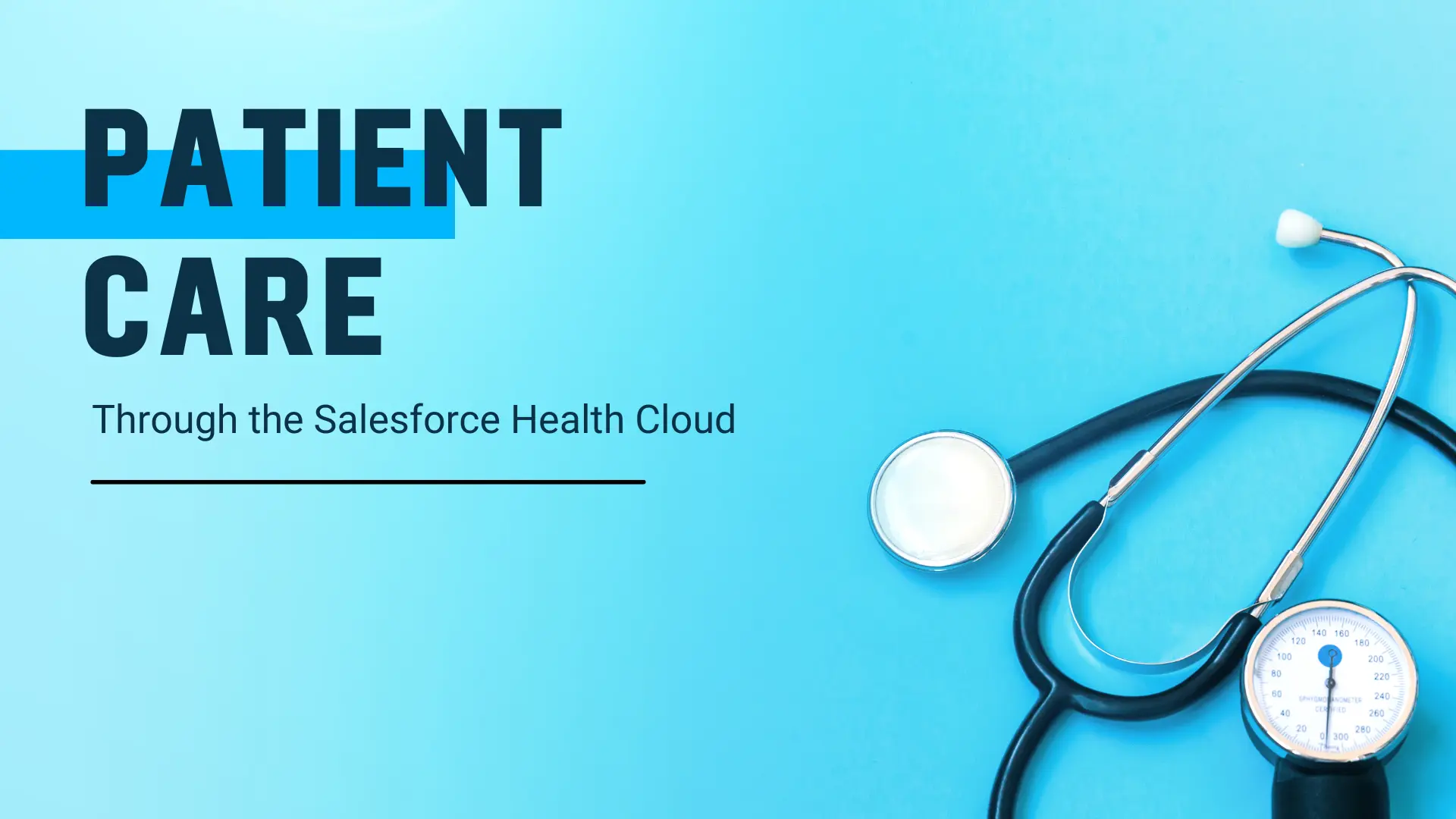According to a recent report by Market Research Future (MRFR), the global Health Cloud market is projected to reach a staggering USD 115.7 billion by 2030. This significant growth is anticipated to occur at a compound annual growth rate (CAGR) of 15.6%.
Since its 2016 debut, Salesforce Health Cloud has undergone significant advancements, carefully adapting to the complexities and sensitivities of the healthcare industry. Now, Salesforce takes a further step toward fostering empathetic care, patient trust, and team collaboration with Customer 360 for Health, its latest AI-powered healthcare solution.
Salesforce Health Cloud caters to a diverse range of healthcare organizations. Approximately 17% of its customers are small businesses with less than 50 employees. Medium-sized organizations (100-1000 employees) make up roughly 37% of the customer base, while large enterprises with over 1000 employees account for the remaining 44%.
Table of Contents
What is Salesforce Health Cloud?
Salesforce Health Cloud is a specialized cloud-based platform designed specifically for the healthcare industry. It caters to both patients and healthcare providers by offering a single, unified platform to manage interactions and data. This translates to improved efficiency and better patient care.
For healthcare providers, Health Cloud streamlines workflows by automating administrative tasks and centralizing patient information. This includes demographics, medical history, care plans, and communication with patients.
“A study by Salesforce found that organizations using Health Cloud experienced a 38% reduction in administrative tasks, allowing healthcare professionals to dedicate more time to patient care.”
This centralized view allows doctors, nurses, and other healthcare professionals to collaborate effectively and deliver more coordinated care.
Patients also benefit from Health Cloud. The platform can facilitate secure communication with their care providers, appointment scheduling, and medication management. Additionally, it can provide educational resources and tools to empower patients to take a more active role in their health. Overall, Salesforce Health Cloud aims to improve the healthcare experience for both patients and providers by leveraging the power of cloud technology.
Read About: Salesforce Pro Suite – All-In-One CRM Solution For Small Businesses
Salesforce Health Cloud Architecture
Salesforce Health Cloud operates on a robust and secure cloud-based architecture specifically designed for the healthcare industry. This intricate network of components works together seamlessly to deliver exceptional functionality. Here’s a glimpse into the key elements:
- Core Platform: The foundation of Health Cloud lies in the powerful Salesforce Platform. This established platform offers a reliable and secure environment for managing a variety of healthcare data, applications, and workflows. It leverages familiar Salesforce features like Accounts, Contacts, and Cases, along with custom objects specifically designed for healthcare use cases. Additionally, Health Cloud integrates with core Salesforce functionality like the Salesforce Scheduler, allowing for automated appointment reminders and task management.
- Health Cloud Data Model: This flexible data model serves as a central hub for all patient information. Designed to create a comprehensive 360-degree view of each patient, it encompasses demographics, medical history, care plans, and communication history. This centralized approach ensures all relevant patient data is readily available to authorized healthcare professionals in one place. The data model utilizes industry-standard formats for interoperability, potentially including HL7 (Health Level Seven) for seamless data exchange with Electronic Health Records (EHRs) and other healthcare systems.

- Middleware: Acting as a bridge between Health Cloud and external systems, the middleware layer facilitates crucial integrations. It enables seamless communication through mechanisms like REST APIs (Application Programming Interfaces) to connect with EHRs, scheduling systems, and other healthcare applications. This ensures smooth data flow between different systems, eliminating data silos and improving overall efficiency.
- Security and Compliance: Salesforce Health Cloud prioritizes patient data security. Built-in features like Salesforce Shield comply with industry regulations like HIPAA to ensure the highest level of data protection. This fosters trust with patients and healthcare providers alike.

Why Use Salesforce Health Cloud?
The healthcare landscape faces constant pressure to improve efficiency, reduce costs, and deliver exceptional patient care. Salesforce Health Cloud addresses these challenges by offering a comprehensive suite of tools designed specifically for the healthcare industry.
- Streamlined Workflows: Health Cloud automates repetitive administrative tasks, such as appointment scheduling and referral management. This frees up valuable time for healthcare professionals to focus on what matters most – providing personalized care to their patients. Imagine doctors and nurses spending less time on paperwork and more time interacting with patients.
- Improved Care Coordination: Health Cloud fosters collaboration between different healthcare providers. A centralized platform allows real-time access to patient data, including medical history, care plans, and treatment progress. This ensures everyone involved in a patient’s care is on the same page, leading to more coordinated and effective treatment plans.
- Enhanced Patient Engagement: Health Cloud empowers patients to take a more active role in their health. The platform facilitates secure communication with doctors, appointment scheduling, and medication management tools. Additionally, patients can access educational resources to better understand their conditions and treatment options. This fosters a sense of partnership between patients and providers, leading to improved patient outcomes.
- Data-Driven Insights: Health Cloud goes beyond simply managing data. Advanced analytics tools allow healthcare organizations to identify trends, predict potential health risks, and optimize resource allocation. This data-driven approach can lead to improved preventive care strategies and reduced healthcare costs.
- Increased Revenue Potential: Health Cloud can also be leveraged to improve revenue cycle management. The platform streamlines billing and coding processes, reduces administrative errors, and facilitates faster claim reimbursements.
- Seamless EHR Integration: Health Cloud seamlessly integrates with electronic health record (EHR) systems, eliminating the need for manual data entry and reducing the risk of errors. This ensures that patient information is always up-to-date and readily accessible to authorized healthcare providers.
- Tailored Patient Programs: Health Cloud allows healthcare organizations to develop and manage customized patient programs. These programs can address specific health conditions, demographics, or care needs. This level of personalization can lead to improved patient engagement and better health outcomes.

Why Consider Salesforce Health Cloud?
Salesforce Health Cloud steps in as a comprehensive solution, offering a suite of tools specifically designed to address these challenges.
- Streamlined Workflows: Health Cloud automates repetitive administrative tasks like appointment scheduling and referral management. This frees up valuable time for healthcare professionals, allowing them to focus on what matters most – providing personalized care to their patients. Imagine doctors and nurses spending less time on paperwork and more time interacting with patients.
- Improved Care Coordination: Health Cloud fosters seamless collaboration between various healthcare providers. A centralized platform allows real-time access to patient data, including medical history, care plans, and treatment progress. This ensures everyone involved in a patient’s care is on the same page, leading to more coordinated and effective treatment plans.
- Adaptability: Health Cloud is a flexible platform that can adapt to the specific needs of different healthcare organizations. This allows healthcare providers to tailor the platform to their unique workflows and patient populations.
- Connectivity: Health Cloud fosters strong connections not only between patients and providers but also between various healthcare departments and institutions. This improved connectivity can lead to a more holistic approach to patient care.
- Cost Reduction: By streamlining workflows, reducing administrative errors, and improving revenue cycle management, Health Cloud can help healthcare organizations reduce overall costs. Additionally, the platform can help identify areas for cost savings through data-driven insights.
Summary
Salesforce Health Cloud transcends the boundaries of a typical healthcare platform. It empowers organizations to revolutionize patient care and operational efficiency.
Health Cloud prioritizes the security and privacy of sensitive patient data. Built-in features and compliance with industry regulations ensure data is always protected. This builds trust with patients and healthcare providers alike.
While the healthcare landscape faces numerous challenges, Salesforce Health Cloud stands as a strong asset. By empowering patient engagement, streamlining workflows, and ensuring data security, Health Cloud paves the way for a brighter future in healthcare delivery.
Salesforce Health Cloud offers a robust foundation, but its true potential for healthcare organizations is unlocked through customization and app development.

